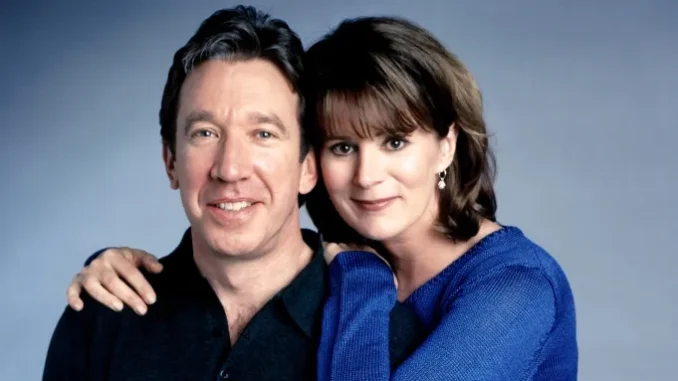
When we think of iconic sitcoms from the ’90s, Home Improvement undoubtedly stands out. The chemistry between Tim Allen and Patricia Richardson as Tim and Jill Taylor kept millions glued to their screens. However, the sudden end of the beloved show left many fans scratching their heads. Now, Patricia Richardson reveals the shocking truth: a pay disparity between her and Tim Allen was at the heart of the series’ demise. Let’s dive into the details and explore what this revelation means for Hollywood and beyond.
The Rise of ‘Home Improvement’ and Its Cultural Impact
Home Improvement wasn’t just a sitcom—it was a cultural phenomenon. With its relatable humor, family-centric plotlines, and unforgettable catchphrases (hello, “More power!”), the show resonated with audiences around the world.
Patricia Richardson and Tim Allen: The Dynamic Duo
The show’s success largely hinged on the chemistry between Tim Allen, the comedic toolman, and Patricia Richardson, the grounded, witty matriarch. Together, they embodied the ups and downs of married life in a way that felt authentic.
The Shocking Pay Disparity
Unequal Pay in the Spotlight
In a recent interview, Patricia Richardson revealed that she was consistently paid less than Tim Allen, despite being a co-lead. This isn’t an isolated issue in Hollywood; it reflects a broader trend of gender-based pay inequality.
How It Impacted the Show’s Dynamics
Richardson explained that the disparity affected more than just her paycheck—it created an imbalance in how the actors approached their roles. “It felt like I wasn’t as valued as my male counterpart,” she admitted.
Why the Show Ended
The Final Straw
As the show’s popularity grew, Richardson pushed for a pay increase to match Allen’s salary. Negotiations hit a standstill, and when it became clear that equity wouldn’t be achieved, she decided to walk away.
A Stand for Fairness
By refusing to accept less, Richardson became an inadvertent trailblazer for pay equity. Her decision sent a strong message: no one should settle for less than they deserve.
Hollywood’s Gender Pay Gap: A Persistent Problem
A Tale as Old as Time
The issue of unequal pay is nothing new. Women in Hollywood have long been paid less than their male counterparts, even when they share equal billing.
Recent Efforts to Address the Issue
In recent years, high-profile actors like Jennifer Lawrence and Natalie Portman have spoken out about pay inequality, sparking industry-wide discussions.
How ‘Home Improvement’ Fits Into the Bigger Picture
Richardson’s experience serves as a reminder that even the most beloved shows aren’t immune to systemic issues.
Lessons Learned from the ‘Home Improvement’ Pay Gap
The Power of Speaking Out
By sharing her story, Richardson has reignited conversations about pay equity. Her bravery reminds us that change begins when someone speaks up.
What Fans Can Do
Fans can support actors like Richardson by advocating for transparency and fairness in the entertainment industry.
Conclusion
The revelation about the Home Improvement pay disparity is more than just a behind-the-scenes tidbit—it’s a call to action. Patricia Richardson’s decision to leave the show highlights the importance of standing up for fairness, even when it’s difficult. As fans, we can honor her courage by demanding better from Hollywood and celebrating those who fight for equality.
FAQs
1. Why did Patricia Richardson leave Home Improvement?
Patricia Richardson left the show due to pay disparity between her and Tim Allen, which she felt was unfair and reflective of broader gender inequality in Hollywood.
2. Did Tim Allen address the pay disparity claims?
As of now, Tim Allen has not publicly commented on Patricia Richardson’s recent statements about the pay gap.
3. How long did Home Improvement run?
Home Improvement aired for eight successful seasons from 1991 to 1999.
4. Are pay disparities common in Hollywood?
Yes, gender-based pay inequality has been a longstanding issue in the entertainment industry, with many actors speaking out in recent years.
5. What can be done to address pay inequality in Hollywood?
Advocacy, transparency, and public pressure are essential to creating an equitable environment in the entertainment industry.
This article was crafted to shine a light on the challenges of gender inequality in Hollywood and how Patricia Richardson’s story exemplifies the fight for fairness.
